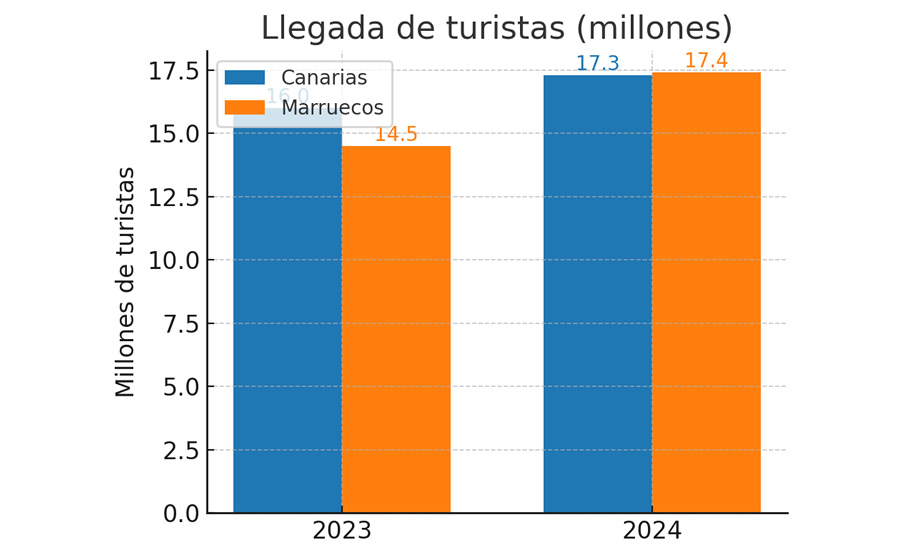
Morocco closed 2024 with an all-time record of 17.4 million visitors, 20% more than in 2023. With this leap, the Maghreb country has consolidated its position as Africa's leading tourist destination, ahead of Egypt and the Canary Islands.
The archipelago also reached record figures, with 17.3 million tourists, 8% more than the previous year. However, while the Canary Islands have maintained more stable growth, Morocco is making rapid progress thanks to new air routes, a diversified offer and international promotional campaigns.
The differences can be seen in tourist spending. In the Canary Islands, each traveller spent an average of 1,400 euros, compared to 630 euros in Morocco. This allowed the archipelago to collect more than 21.4 billion euros in 2024, almost twice as much as its neighbour, despite receiving a similar volume of tourists.
In terms of employment and economic weight, the gap is even clearer. Tourism accounts for 36.8% of the Canary Islands' GDP and supports 231,000 direct jobs. In Morocco, tourism accounts for 7% of GDP and generates 827,000 direct jobs, with a strong effect on related activities.
The source markets continue to be European. The Canary Islands are mainly dependent on the UK and Germany, which account for almost 60% of its visitors. Morocco receives mainly tourists from France and Spain, largely linked to the resident diaspora in those countries.
Looking to the future, Morocco aspires to reach 30 million tourists by 2030, coinciding with the World Cup. The Canary Islands, for its part, is committed to strengthening the sustainability and added value of its offer in order to maintain its competitive advantage in terms of income and employment in the face of growing pressure from the neighbouring country.
Source: radioinsular.es
